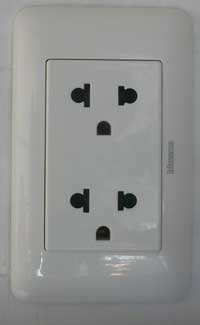paternoster2012
New Member
Hello,
I'm curious about putting together a 230v receptacle tester as seen here:

I have found a few schematics online, but they all seem to be designed for 110v

My mains electric is 230v single phase
Unfortunately the apartment building I am living in is a nightmare when it comes to the wiring.(lack of enforced building codes) Having this simple device would save me a lot of headaches, but I am unable to find anything remotely similar locally.
I picked up some 220v neon indicator lights that came prewired with 150k resistors.
Can anyone get me a ballpark figure of the resistors I need, and tell me if the schematic above would be correct?
I'm curious about putting together a 230v receptacle tester as seen here:

I have found a few schematics online, but they all seem to be designed for 110v

My mains electric is 230v single phase
Unfortunately the apartment building I am living in is a nightmare when it comes to the wiring.(lack of enforced building codes) Having this simple device would save me a lot of headaches, but I am unable to find anything remotely similar locally.
I picked up some 220v neon indicator lights that came prewired with 150k resistors.
Can anyone get me a ballpark figure of the resistors I need, and tell me if the schematic above would be correct?

